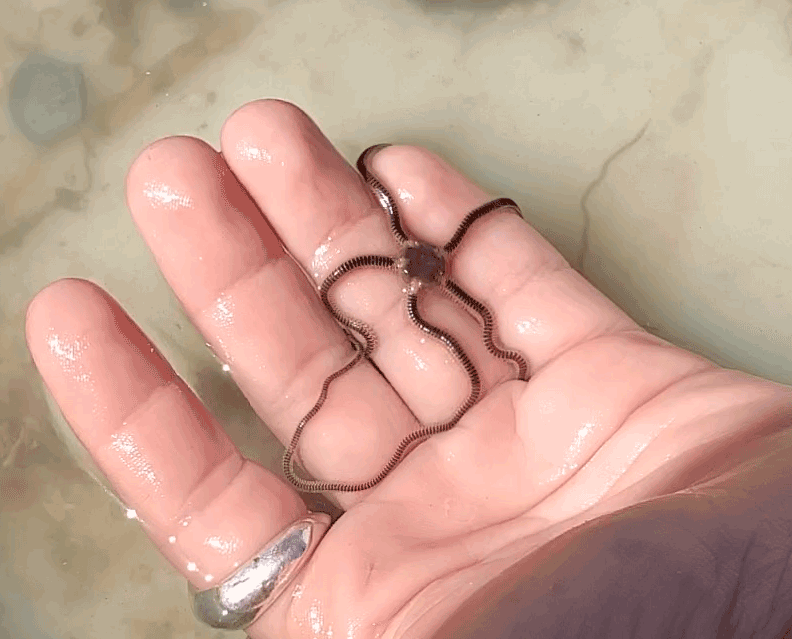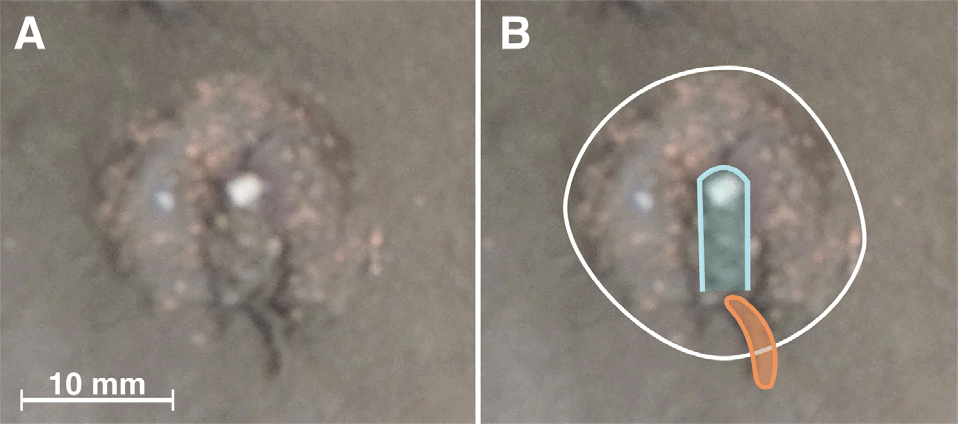(February 10, 2020) --

A new study published by Dauphin Island Sea Lab researchers adds a new layer to understanding how an oil spill could impact marine life.
A diverse community of worms and other marine organisms on the seafloor plays a large role in nutrient cycling, organic matter burial, and remineralization. The burrowing and feeding activities of these organisms or bioturbation helps in the oxygenation of the sediment.
The research team, led by Dr. Kelly Dorgan, conducted a mesocosm experiment to investigate how sublethal levels of oil contamination in seawater may affect animals that live in marine sediments. The mesocosm is a flowthrough facility with tanks large enough to include the elements of field realism, but small enough that some factors can be controlled.
The research exposed tube worms and brittlestars to seawater that had been mixed and contaminated with oil but had the oil solids removed. These taxa are abundant in the northern Gulf of Mexico. They are both surface deposit feeders. The tubeworm builds its tube from shell fragments and can move vertically and laterally within the sediment. The tube sits about an inch above the sediment allowing the worm to bend the tube and feed on surface sediments. The brittlestar burrows, positioning its oral disk within an inch of the surface. A brittlestar’s arms extend above the surface to collect sediment on tube feet.

To the research team’s knowledge, these taxa had not been previously evaluated for responses to hydrocarbon exposure.
Overall, it was determined there was little direct response of sediment animals to oil-contaminated water. It’s believed they would be more susceptible to sediment contamination. Notably, the metrics used in this study are broadly applicable to sediment-dwelling animals and could be usefully applied to future exposure studies.
Dorgan and her team introduced a novel method to quantify horizontal bioturbation and believe it will be a helpful tool in understanding how marine animals mix sediments. They measured bioturbation using luminophores, which are fluorescent sediment grains that glow when illuminated. Luminophores have been used to measure vertical bioturbation before, however, in this study, the researchers also estimated horizontal clumping/dispersion using tools from spatial analysis. They found differences in both horizontal and vertical mixing between the two species studied.
The study, Investigating the sublethal effects of oil exposure on infaunal behavior, bioturbation, and sediment oxygen consumption, is published in the Marine Ecology Progress Series.